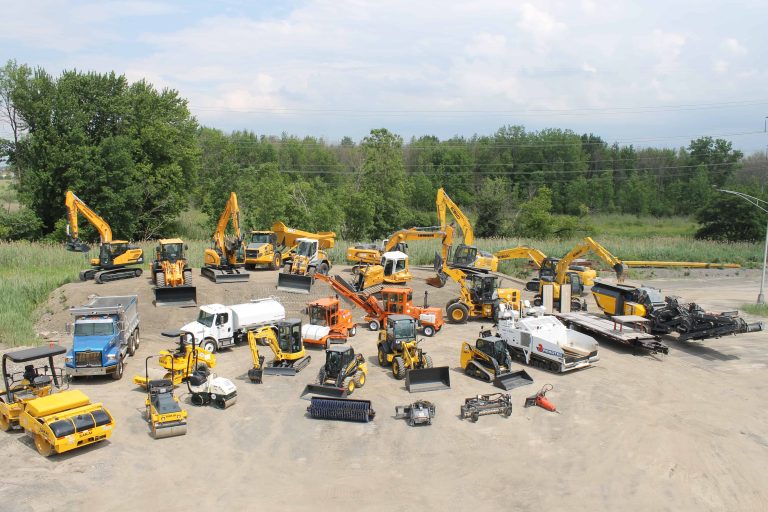Dozer Rental: Powerful Earthmoving Tools for Your Construction Requirements
Dozer Rental: Powerful Earthmoving Tools for Your Construction Requirements
Blog Article
Maximize Your Budget Plan by Comprehending the Costs Related To Construction Devices Services
Comprehending the complete extent of costs associated with construction devices rentals is essential for optimizing your budget. What approaches can be utilized to properly handle these expenses and make sure a much more efficient rental experience?
Review of Rental Costs
When considering building and construction tools rentals, recognizing the associated costs is vital for reliable budgeting and job preparation. Rental costs can vary dramatically based on numerous factors, including devices kind, duration of rental, and area. The preliminary rental charge frequently shows the equipment's market need and its linked functional abilities, affecting the overall expenditure.
In addition to the base rental rate, ancillary expenses may develop, such as transportation charges, fuel surcharges, and upkeep costs. It is vital to account for these added expenses to properly assess the overall cost of renting equipment. Moreover, the rental duration can impact prices; longer leasings may get approved for affordable rates, while short-term services might sustain greater everyday fees.

Breakdown of Rental Prices
A comprehensive understanding of rental rates is vital for specialists and job supervisors intending to enhance their budget plans. Rental prices for construction equipment typically include a number of elements, consisting of base prices, time-based charges, and use charges.
Base prices are the core charges related to the service of the equipment, usually established by the type and dimension of the machinery. These prices can differ significantly, influenced by elements such as tools need, schedule, and local market trends. Time-based fees, which might be daily, weekly, or monthly, offer to accommodate different job timelines and rental durations.
Furthermore, rental rates might include usage costs, which apply when equipment is made use of beyond a specified limit, ensuring that the rental company can account for deterioration. Seasonal demand fluctuations can additionally influence rental rates, with peak building periods generally regulating higher rates.
Additionally, comprehending the rental business's policies concerning upkeep and insurance policy can offer additional insight right into the general price structure. By analyzing these parts, professionals can make informed decisions, making sure the choice of rental devices straightens with both task requirements and budget plan restrictions.
Extra Costs to Take Into Consideration
Recognizing the intricacies of additional fees is important for contractors to manage their total leasing expenses successfully. Past the common rental rates, different additional fees can dramatically impact the total price of tools leasing. These charges usually include delivery and pick-up charges, which can vary based upon range and logistics involved in delivering the equipment to and from the job website.
Moreover, some rental business may enforce gas additional charges if the devices is returned with less gas than when rented out. It is likewise essential to be mindful of potential cleaning costs, especially for customized tools that requires thorough maintenance after use.

Thoroughly examining the rental agreement and clarifying these extra charges in advance can aid contractors stay clear of unanticipated costs and ensure that spending plans continue to be intact throughout the job lifecycle.
Maintenance and Repair Work Expenditures
Routine repair and maintenance costs are often neglected variables that can dramatically influence the total price of building and construction devices leasings. When renting out devices, it is critical to take into consideration not just the rental charges yet additionally the prospective prices related to maintaining the machinery in optimal operating problem.
Numerous rental business include standard upkeep as part of the rental arrangement; nonetheless, more unexpected malfunctions or comprehensive repair services can cause additional expenses. It's vital to review the rental contract very carefully to recognize what upkeep solutions are covered and what responsibilities fall on the occupant.
Furthermore, equipment that is not well-maintained can cause inadequacies on duty website, possibly enhancing and causing hold-ups job prices. To mitigate these dangers, it is recommended to perform routine assessments and maintain open communication with the rental copyright concerning any concerns that occur throughout use.
Insurance and Obligation Costs
Insurance and responsibility costs are essential components that can dramatically impact the overall expense of construction devices rentals (aerial lift rental). These costs guarantee that both the rental company and the customer are shielded from potential financial losses arising from accidents, damage, or theft during the rental duration

In addition, clients need to be conscious of any deductibles or exclusions in the insurance coverage, as these can affect possible out-of-pocket expenses. Recognizing the terms and conditions of any type of insurance policy coverage is important to stay clear of unforeseen prices. Inevitably, budgeting for insurance coverage and responsibility expenditures can help make sure a smoother rental experience and protect against financial risks linked with building and construction tasks.
Conclusion
In conclusion, a detailed understanding of the expenses linked with construction tools leasings is crucial for effective budget plan management. Eventually, informed decision-making regarding tools services contributes to the general success of building and construction endeavors.
Rental costs can differ considerably based on a number of variables, consisting of tools kind, duration of service, and location (aerial lift rental). The rental duration can impact rates; longer rentals may qualify for discounted prices, while short-term rentals could incur higher daily fees
By performing complete study and engaging with credible rental firms, service providers can successfully navigate the intricacies of rental rates, eventually maximizing their financial resources.
Beyond the common rental rates, numerous supplemental costs can dramatically affect the total cost of devices leasing. Rental firms typically provide obligation insurance coverage that covers injuries to 3rd events or damage to building, while tools damages insurance can cover the expense of repair services or substitute if the rented out tools is harmed.
Report this page